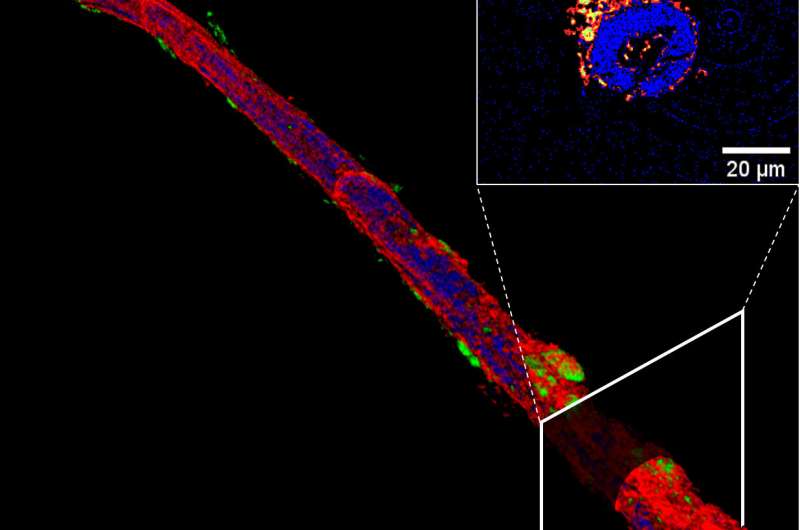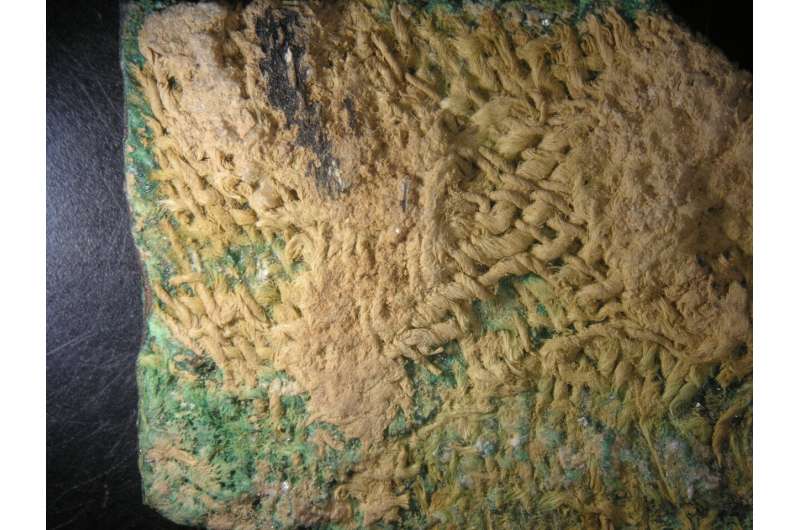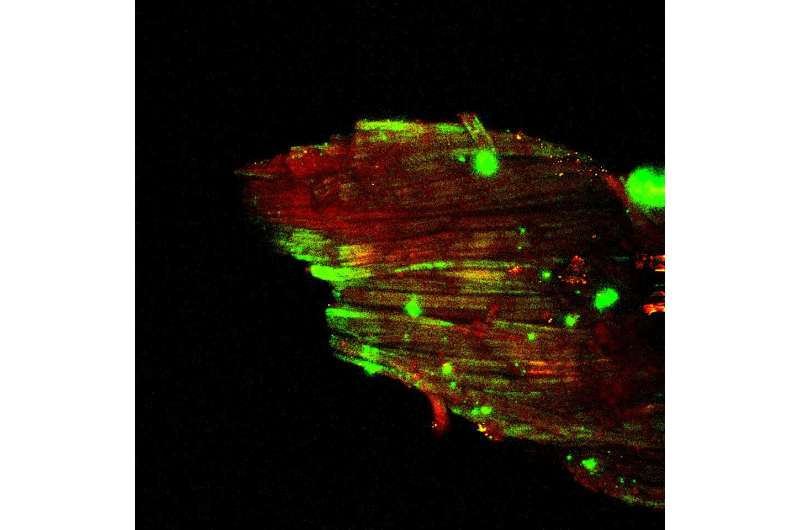August 4, 2020 report
How textiles undergo fossilization via mineralization

A team of researchers affiliated with multiple institutions in France has solved the mystery of how textiles fossilize via mineralization. In their paper published in Proceedings of the National Academy of Sciences, the group describes a host of tools and techniques they used to analyze fossilized textiles and what they learned.
Prior research has shown that textiles (cloth or woven fabric) can undergo fossilization via a mineralization process—and can thus be preserved for thousands of years. But until now, the process by which it happens has not been understood. To learn more, the researchers used a host of tools to study the process.
The work involved first obtaining samples—some came from excavation sites in the Near East, while the rest were found at the Louvre Museum. In both cases, the samples were approximately 5,000 years old. Next, the team set to work using semiquantitative synchrotron X-ray microtomography, nanoscale infrared imaging and harmonic generation microscopy to study the samples at very high spatial resolution—from the nano to the microscale. It also allowed them to assemble a physicochemical sequence of events that led to preservation.
The researchers found that there were three main stages in the fossilization process. In the first, water carried antimicrobial metal cations from nearby metals as they corroded, along with soil solutes. This prevented the textiles from breaking down. In the second stage, the solutes and cations were absorbed by the fibers, which made them swell, and which resulted in the creation of an inorganic crust, leading to cellulose degradation. In the final stage, the fibers underwent a slow silicification process that involved condensation of siliceous compounds.

The discovery process also revealed some of the conditions necessary for textile fossilization; foremost among them was that they had to be buried with something made of metal—the presence of just the right amount of water is another precondition.

The researchers suggest their findings not only show the process of textile fossilization, but also demonstrate how imaging techniques can be used to learn more about preservation techniques.
More information: Corentin Reynaud et al. In-place molecular preservation of cellulose in 5,000-year-old archaeological textiles, Proceedings of the National Academy of Sciences (2020). DOI: 10.1073/pnas.2004139117
Journal information: Proceedings of the National Academy of Sciences
© 2020 Science X Network




















